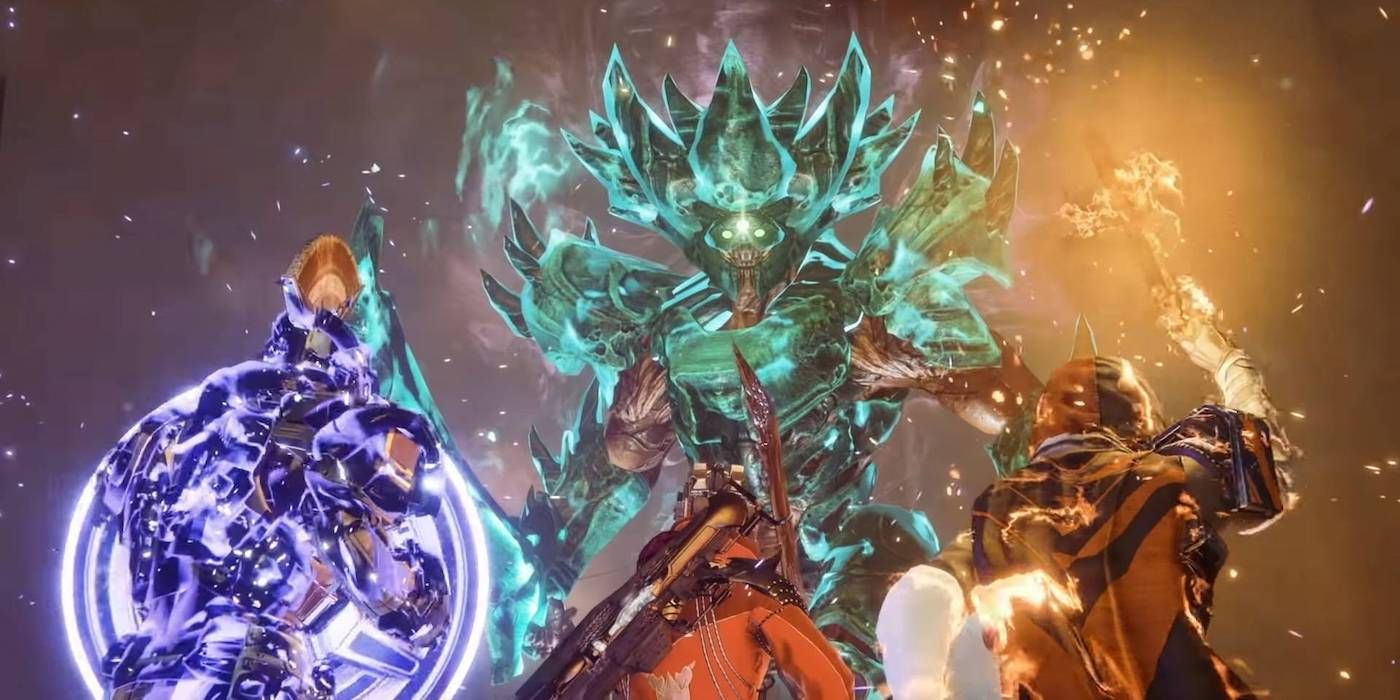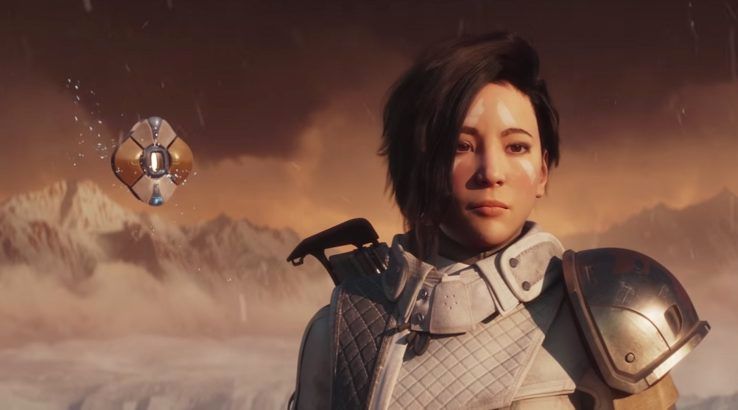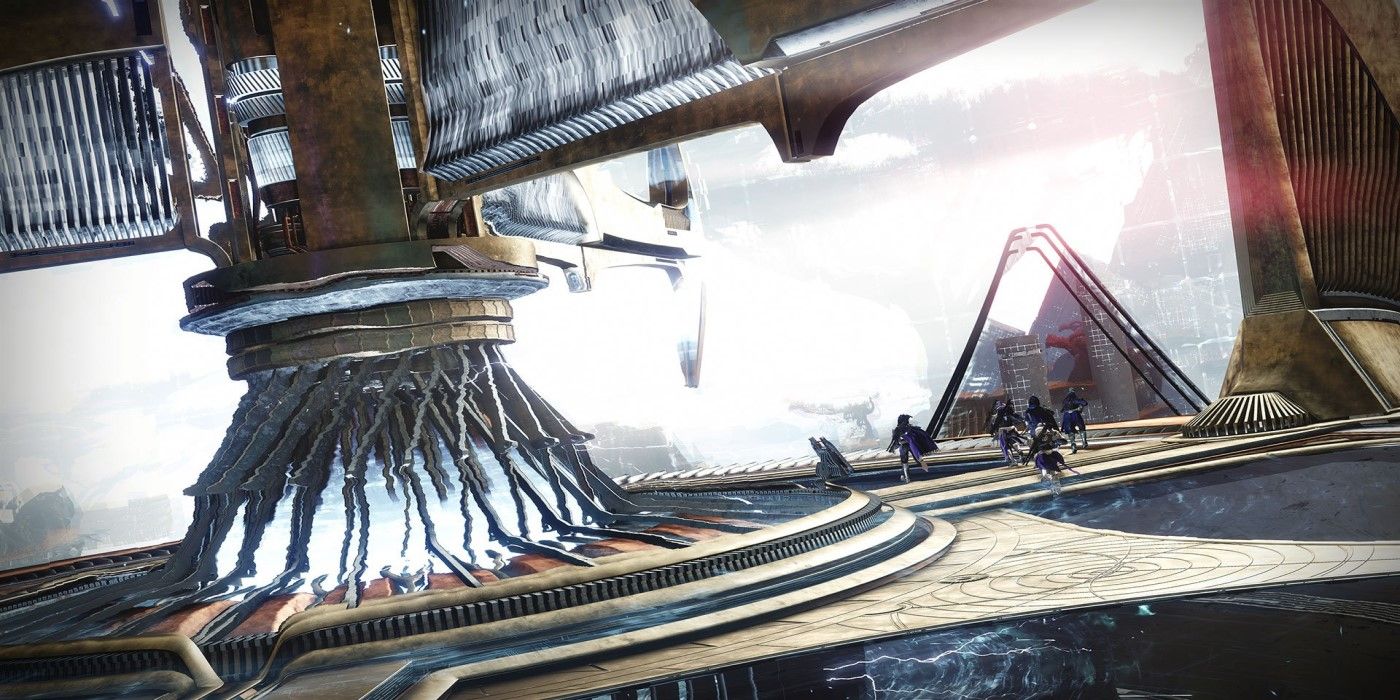Destiny 2 seems to have a problem moving forward into the future without relying on some form of the past. Much of the game since its initial campaign at launch has had a hard time moving the narrative and universe forward, and every time it does take a step into the future, it almost always takes a step back or needs the past to progress. It’s an interesting dance, but one that is starting to feel a little repetitive.
Part of that comes from the deep lore that has been built into Destiny 2 since the original game. The Grimoire cards from Destiny and the lore books of Destiny 2 have helped give context and history to the Destiny universe. However, many of those legendary and fabled events and characters found in the lore have stepped out of the past and returned in some way within the game itself.
Letting players interact with some of these characters they have learned about from the game’s lore has often been some great bits of fan service, yet it is probably time to start moving forward and let the past stay in the past for a while. Not only is it affecting the game’s ability to take progressive strides forward, but it is also making the lore feel shallower. The game’s expansions and the return of characters like Ana Bray, Osiris, and Saint-14 have made those characters the player’s contemporaries instead of fabled Guardians of the past. The meaningful stories and legends of the past are becoming scarcer as they become the source of content drops.
Looking back at Destiny 2, the original campaign was a step into the future, introducing the Red War that saw the Cabal leader Dominus Ghaul besieging the Last City, destroying the Tower, caging the Traveler, and zapping Guardians of their Light. What ensued was a narrative of players regaining their light, fighting back against the Cabal, and eventually causing the reawakening of the Traveler. The Speaker was lost in the conflict, a new Tower was built, new characters like Hawthorne were introduced, and the world and its inhabitants were changed by these events, perhaps seen most clearly in Ikora Rey dealing with losing her Light and her changed outlook after regaining it.
After that, the Curse of Osiris expansion saw the return of Osiris, drawing a character out of the past for players to meet and revisit his history. Next, was the Warmind expansion, which brought back Ana Bray and Rasputin. It would be remiss to say that neither of these expansions also progressed the world in some way, but its contributions of bringing the past into the present are much greater than taking players from the present into the future.
Black Armory introduced a new character in Ada-1, but once again, her entire story and that of the Black Armory is steeped in the past. Season of the Drifter had a strong thread of Dredgen Yor and Shin Malfur, drawing from one of the most famous stories in the game’s lore. Season of Opulence, for how great the Menagerie was/is, it was a return of the Leviathan and Emperor Calus. Season of the Undying’s big climax was the return of a Destiny 1 boss, the Undying Mind. And, of course, the current Season of Dawn brought back Saint-14.
What hasn’t been mentioned yet are the major expansions, Forsaken and Shadowkeep, which unlike these smaller content drops, have been successful in grounding its content in the world of Destiny, acknowledging its deep history while also progressing the world and narrative. Forsaken introduced new characters like The Spider, it moved forward the stories and actions of familiar contemporaries including Prince Uldren, Mara Sov and Petra Venj, it killed off one of the franchise’s most beloved characters, and it introduced players to the Dreaming City. Shadowkeep also moved the story forward by introducing the pyramid ship on the Moon and promising that the Darkness is coming.
But that does not mean even those expansions did not have their own weaknesses in this same way of relying on the past, less so on the narrative front but definitely on the gameplay elements they used. Forsaken still relied on the Ahamkara, the game’s ancient magical dragons, to tell some of its story. And Shadowkeep brought back the entire Moon destination (with some new additions like added Lost Sectors) in Shadowkeep. Additionally, the Nightmares are basically reskins of famous bosses of the franchise’s past.
Not only are the enemies retreading the past, but many of the quest weapons in the game are as well. The Last Word, Thorn, and Rose are steeped in the lore of the franchise, while weapons like Sleeper Simulant, Thunderlord, and The Jade Rabbit are returning weapons from the first game. When it comes to earning weapons, it feels like players are digging up the past instead of forging something new.
Activities often take players to locations they’ve been to before. The Black Garden, which appeared in the original Destiny 1 campaign, returned last season. This season’s Sundial literally sends players to the past on Mercury, and the list goes on.
It does not seem like the solution is to fully ignore the past for new stories, as the rich universe of Destiny is one of its biggest assets. But the scales should probably start tipping in the direction of the future instead of the past. The original Red War campaign and the Forsaken campaign are when Destiny 2 accomplished this best. It acknowledged the past and unveiled more of it, but there were more steps forward rather than standing still while the past came into the present.
Nothing has yet to be revealed about Season 10 or 11 or even the next major fall expansion after that. Some of this may very well be addressed in these future content drops, but for now, players are spending more time in the past than they are pushing the Destiny universe into its future.
Destiny 2: Shadowkeep is available now for PC, PS4, Stadia, and Xbox One.



